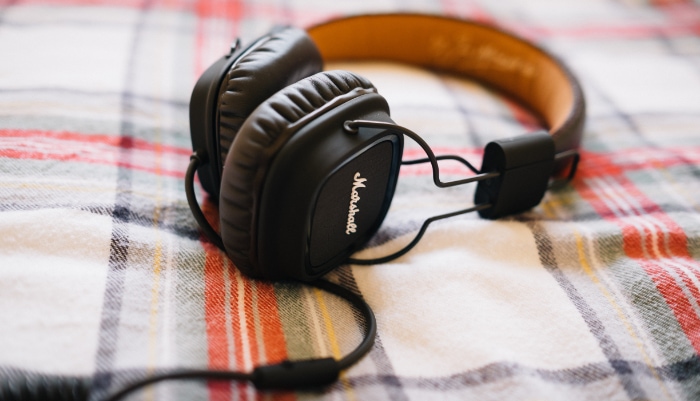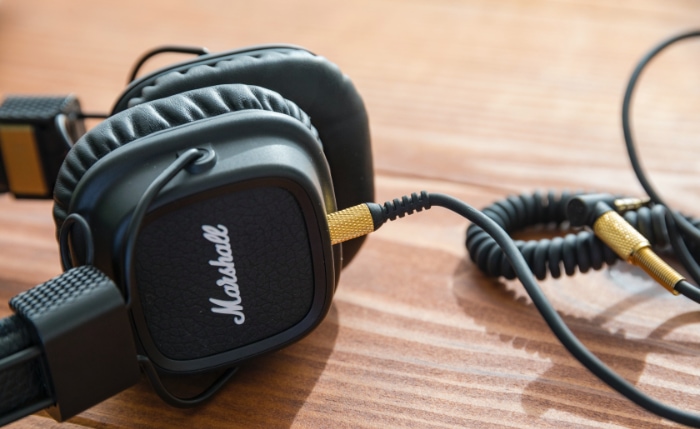Why Do My Wired Headphones Keep Cutting Out? (How to Fix)

Wired headphones have long been the go-to choice for many music enthusiasts, gamers, and casual listeners who desire a reliable and consistent audio experience. These headphones use a physical cable to connect to a variety of devices, such as smartphones, laptops, and music players.
Despite the recent surge in popularity of wireless alternatives, wired headphones continue to be favored by those seeking high-quality sound without the hassle of charging batteries or dealing with Bluetooth connectivity issues.
However, wired headphone users often face a common yet frustrating issue: the sound cutting out intermittently or disappearing altogether. This can be especially annoying when you’re in the middle of an important call or deeply immersed in your favorite song.
In this blog, we will explore the common reasons behind wired headphones cutting out and provide practical solutions to help you resolve this issue.
Common Reasons for Wired Headphones Cutting Out
Wired headphones, though reliable and generally more cost-effective than their wireless counterparts, can sometimes experience audio cut-outs. Understanding the common causes of this issue can help you diagnose and fix the problem. Here are some of the most frequent reasons for wired headphones cutting out:
Damaged Cables
Kinks or frays in the cable: Constant bending, twisting, or yanking can weaken the internal wires within the headphone cable, leading to breaks or shorts in the electrical connections. This can result in audio cutting out or producing intermittent static.
Cable connector issues: The connectors at the ends of the cable, which plug into your device or headphones, can become damaged or loose over time. This can cause poor electrical connections, leading to audio cut-outs or inconsistent sound quality.
Dirty or Corroded Audio Jack
Dust accumulation: Dust and debris can accumulate inside the audio jack of your device, causing poor contact between the jack and the headphone connector. This may lead to audio disruptions or complete loss of sound.
Liquid damage: Exposure to moisture or liquid can cause corrosion or oxidation on the metal surfaces within the audio jack or the headphone connector, leading to poor conductivity and audio cut-outs.
Loose Connections
Audio jack not fully inserted: If the headphone connector is not properly inserted into the audio jack, it can result in an unstable connection and intermittent audio issues.
Internal wiring issues: Over time, the internal wiring within the headphones or the device’s audio jack may become loose or damaged, leading to poor electrical connections and audio cut-outs.
Faulty Audio Source
Hardware or software issues in the audio device: Problems with your device’s hardware, such as a damaged sound card, or software issues like outdated drivers, can cause audio inconsistencies or cut-outs when using wired headphones.
Incompatibility between devices: In some cases, the headphones and the audio source may not be fully compatible, leading to audio issues. For example, using a TRRS connector (4-pole) with a device that only supports TRS connections (3-pole) can result in audio cut-outs or other sound problems.
Troubleshooting Steps to Identify the Problem
Before attempting to fix your wired headphones, it’s essential to identify the root cause of the audio cut-outs. The following troubleshooting steps can help you determine the problem and guide you toward an appropriate solution:
Inspect the Cable and Connectors
Visual inspection: Examine the headphone cable for any visible signs of damage, such as kinks, frays, or broken insulation. Also, check the connectors for signs of wear, bent pins, or damage.
Physical examination: Gently flex and twist the cable at various points along its length, paying particular attention to the areas near the connectors. If the audio cuts out or becomes intermittent during this process, it may indicate a damaged cable or connector.
Clean the Audio Jack and Connector
Proper cleaning techniques: Use a soft, dry cloth or a cotton swab to gently clean the headphone connector and the audio jack on your device. Be careful not to push debris further into the audio jack.
Appropriate cleaning tools: For more stubborn dirt or debris, consider using a can of compressed air or a specialized audio jack cleaning tool. These can help remove debris without causing damage to the delicate internal components.
Check the Audio Source
Test the headphones with different devices: To rule out a problem with the audio source, try connecting your headphones to various devices, such as a different phone, tablet, or computer. If the audio cut-outs persist across multiple devices, the issue is likely with the headphones themselves.
Update software or drivers: Ensure that your device’s operating system, audio drivers, and any relevant software are up to date. Outdated software or drivers can cause audio issues and should be updated to the latest versions.
Test the Headphones for Internal Wiring Issues
Gently wiggle the cable at different points: While playing audio through the headphones, gently wiggle the cable at various points, including near the connectors and the earpieces. If the audio cuts out or becomes intermittent, this may indicate an internal wiring issue within the headphones.
Listen for audio cut-outs or static: While wearing the headphones, listen for any static, crackling, or audio cut-outs, as these may indicate a wiring problem or loose connection inside the headphones or the audio jack.
How to Fix Wired Headphones That Keep Cutting Out

Once you have identified the cause of the audio cut-outs, you can take appropriate steps to fix the issue. Here are some solutions for common problems with wired headphones:
Repair Damaged Cables
DIY cable repair: For minor cable damage, such as fraying or exposed wires, you can use electrical tape to cover the damaged area. However, this is a temporary solution and may not fully restore the audio quality. For more advanced repairs, such as soldering broken wires, you’ll need some basic soldering skills and equipment. Numerous online tutorials can guide you through the process.
Professional repair services: If you’re not comfortable attempting a DIY repair or if the damage is extensive, consider seeking help from a professional electronics repair service. They can diagnose and fix the issue, potentially saving you the cost of replacing your headphones.
Replace Faulty Audio Jacks or Connectors
DIY replacement: If the headphone connector or your device’s audio jack is damaged, you can try replacing it yourself. For headphone connectors, you’ll need to purchase a replacement connector, cut off the damaged one, strip the wires, and solder the new connector in place.
For audio jacks, the process is more complex and may involve disassembling your device and soldering a new jack to the internal components. Proceed with caution and ensure you have the necessary tools and skills before attempting this repair.
Professional services: If you’re not confident in your ability to replace an audio jack or connector, it’s best to consult a professional repair service. They can replace the damaged components and ensure your headphones and device function correctly.
Fix or Upgrade the Audio Source
Repairing hardware issues: If the problem lies with your device’s hardware, such as a damaged sound card, you may need to seek professional assistance to replace or repair the affected components.
Updating software or drivers: If the issue is caused by outdated software or drivers, ensure you update them to the latest versions. This can often resolve audio cut-outs and improve overall performance.
Consider Replacing the Headphones
When repairs are not cost-effective: In some cases, the cost of repairing your wired headphones may exceed their value or not guarantee a long-term solution. In these situations, it might be more prudent to invest in a new pair of headphones.
Choosing the right replacement: When selecting a new pair of headphones, consider factors such as build quality, cable durability, and connector type to ensure a long-lasting and reliable audio experience. Look for models with reinforced cables, strain-relief connectors, and a good reputation for durability to minimize the risk of future audio cut-outs.
Preventive Measures to Avoid Future Issues
Preventing audio cut-outs and prolonging the life of your wired headphones is often a matter of proper care and maintenance. By adopting the following preventive measures, you can minimize the risk of future issues and enjoy a seamless audio experience:
Proper Cable Management
Avoiding kinks and tangles: To prevent damage to the internal wires, avoid bending or twisting the headphone cable excessively. When not in use, gently coil the cable without creating tight loops or kinks.
Using cable organizers: Consider using cable organizers, clips, or ties to keep your headphone cable neatly coiled and tangle-free. This can help prevent stress on the cable and extend its lifespan.
Protecting the Audio Jack and Connectors
Using protective covers: To prevent dust and debris from entering the audio jack or connectors, use protective covers or caps when the headphones are not in use. This can help maintain a clean and stable connection between the headphones and the audio source.
Regular cleaning and maintenance: Periodically clean the headphone connectors and your device’s audio jack using a soft, dry cloth or cotton swab to remove dust and debris. For more stubborn dirt, consider using a can of compressed air or a specialized cleaning tool.
Caring for the Audio Source
Regular software updates: To ensure optimal audio performance, keep your device’s operating system, audio drivers, and any relevant software up to date. This can help prevent compatibility issues and improve overall sound quality.
Proper handling and storage: Handle your audio devices with care to prevent accidental drops or damage. When storing your device, avoid exposing it to extreme temperatures, moisture, or direct sunlight, which can degrade the internal components and lead to audio issues.
By adopting these preventive measures and maintaining your headphones and audio devices properly, you can reduce the likelihood of audio cut-outs and extend the lifespan of your wired headphones. This will ensure that you continue to enjoy a high-quality, uninterrupted audio experience.
Conclusion
Wired headphones are a popular choice for many due to their reliability and cost-effectiveness. However, experiencing audio cut-outs can be frustrating and disruptive. By understanding the common reasons behind wired headphones cutting out, such as damaged cables, dirty or corroded audio jacks, loose connections, and faulty audio sources, you can effectively troubleshoot and resolve the issue.
We have discussed various methods to identify and fix problems with wired headphones, from repairing damaged cables to updating software or drivers. Additionally, we have provided preventive measures, including proper cable management, protecting audio jacks and connectors, and caring for your audio source. These steps will help you avoid future issues and ensure a seamless audio experience.
Investing time in understanding the root causes of audio cut-outs and taking appropriate preventive measures can significantly improve your wired headphone experience. By following the troubleshooting and fixing methods outlined in this blog, you can enjoy uninterrupted audio and extend the lifespan of your wired headphones.


